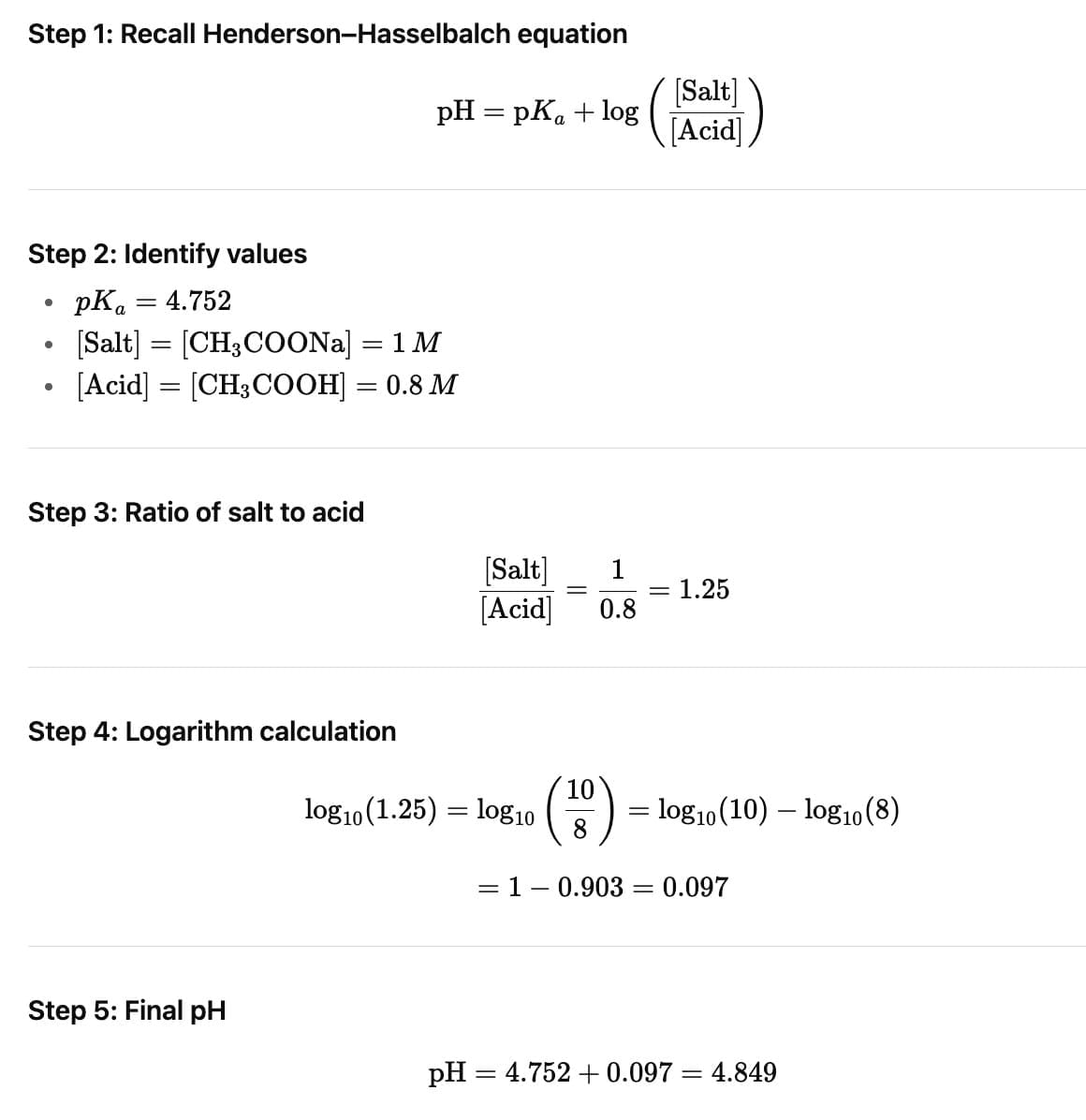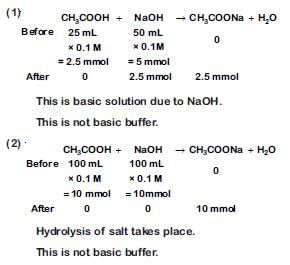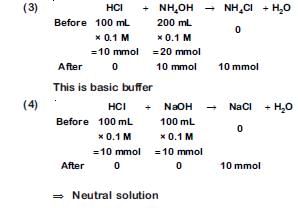NEET Exam > NEET Tests > Test: Buffer solutions (August 1) - NEET MCQ
Test: Buffer solutions (August 1) - NEET MCQ
Test Description
10 Questions MCQ Test - Test: Buffer solutions (August 1)
Test: Buffer solutions (August 1) for NEET 2025 is part of NEET preparation. The Test: Buffer solutions (August 1) questions and answers have been prepared
according to the NEET exam syllabus.The Test: Buffer solutions (August 1) MCQs are made for NEET 2025 Exam.
Find important definitions, questions, notes, meanings, examples, exercises, MCQs and online tests for Test: Buffer solutions (August 1) below.
Solutions of Test: Buffer solutions (August 1) questions in English are available as part of our course for NEET & Test: Buffer solutions (August 1) solutions in
Hindi for NEET course.
Download more important topics, notes, lectures and mock test series for NEET Exam by signing up for free. Attempt Test: Buffer solutions (August 1) | 10 questions in 20 minutes | Mock test for NEET preparation | Free important questions MCQ to study for NEET Exam | Download free PDF with solutions
Detailed Solution for Test: Buffer solutions (August 1) - Question 1
Test: Buffer solutions (August 1) - Question 2
Buffer capacity of a buffer is given as two units for a change in pH by Unity. Then what is the number of moles of acid or base, added in one litre of the solution?
Detailed Solution for Test: Buffer solutions (August 1) - Question 2
Detailed Solution for Test: Buffer solutions (August 1) - Question 3
Test: Buffer solutions (August 1) - Question 4
What is the buffer capacity if 3 moles are added in 5 litres of the solution to change the pH by 2 units?
Detailed Solution for Test: Buffer solutions (August 1) - Question 4
Test: Buffer solutions (August 1) - Question 5
Which of the following is an equation used to calculate the pH of a buffer solution for an acidic buffer?
Detailed Solution for Test: Buffer solutions (August 1) - Question 5
Test: Buffer solutions (August 1) - Question 6
If 0.20 mol/L CH3COOH and 0.50 mol/L CH3COO– together make a buffer solution, calculate the pH of the solution if the acid dissociation constant of CH3COOH is 1.8 × 10-5.
Detailed Solution for Test: Buffer solutions (August 1) - Question 6
Test: Buffer solutions (August 1) - Question 7
Note that the pKa here is given by 4.752, a buffer is made using 0.8 M acetic acid and 1 M Sodium Acetate what do you think its pH is (log10/8 = 0.097)?
Detailed Solution for Test: Buffer solutions (August 1) - Question 7
Test: Buffer solutions (August 1) - Question 8
If the pH of a substance is given by 3 then what is the pOH of the substance?
Detailed Solution for Test: Buffer solutions (August 1) - Question 8
Test: Buffer solutions (August 1) - Question 9
Which of the following do you think is a correct statement?
Detailed Solution for Test: Buffer solutions (August 1) - Question 9
Detailed Solution for Test: Buffer solutions (August 1) - Question 10
Information about Test: Buffer solutions (August 1) Page
In this test you can find the Exam questions for Test: Buffer solutions (August 1) solved & explained in the simplest way possible.
Besides giving Questions and answers for Test: Buffer solutions (August 1), EduRev gives you an ample number of Online tests for practice
Download as PDF

















